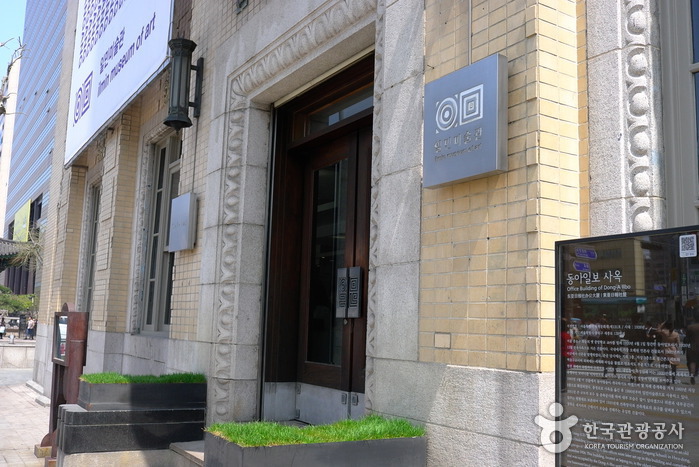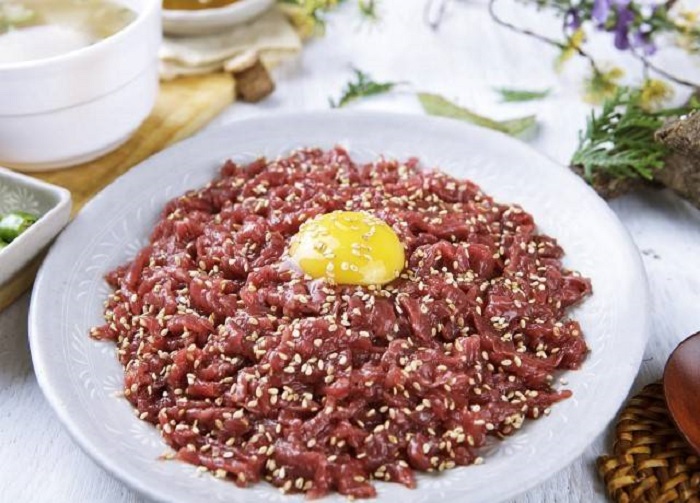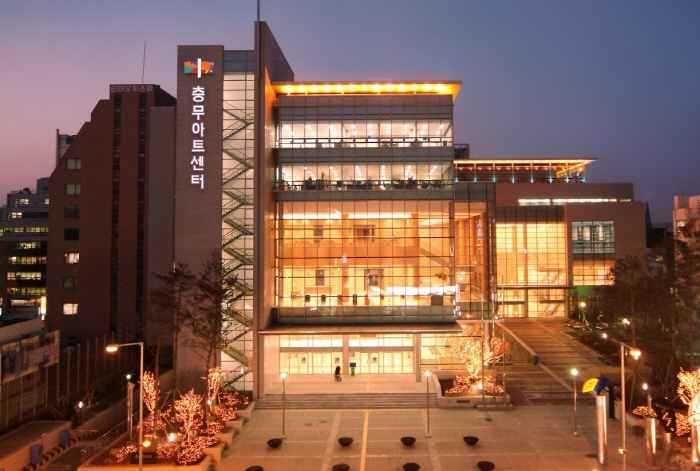Ilmin Art Museum (일민미술관)
4.1Km 2022-09-27
152, Sejong-daero, Jongno-gu, Seoul
The Ilmin Art Museum located in former Dong-A Newspaper Building, was formed in honor of their honorable and late CEO Kim Sang-man. The museum was established in December of 1996, and with a full renovation in 2001, large exhibition hall and Ilmin collection was placed in. Through the renovation, the combination of glass and steel made Artrium aimed to become one of the best comtemporary museum, connecting the museum to the streets of Gwanghwamun.
This museum boasts a large Ilmin collection. There are 430 pieces of Ilmin collection from Goryeo dynasty (918-1392) to present, 1,200 pieces in the Donga Newspaper's collection of art, and 100 pieces of art owned by Hyundai Corporation. The Ilmin Collection mostly consists of pieces that Kim Sang-man collected from ceramics to aesthetic paintings. The Dongah Newspaper's collection has time-relevant pieces that are important in history.
Olens - Chung-Ang Univ. Branch [Tax Refund Shop] (오렌즈 중앙대)
4.1Km 2024-04-16
1F, 87-1, Heukseok-ro, Dongjak-gu, Seoul
-
Jongmyo Shrine [UNESCO World Heritage] (종묘 [유네스코 세계유산])
4.1Km 2024-07-05
157 Jong-ro, Jongno-gu, Seoul
+82-2-765-0195
Jongmyo Shrine was the primary place of worship for kings and their queens throughout the Joseon dynasty. The shrine was built at the same time as Gyeongbokgung Palace, under the orders of King Taejo, the first king of the Joseon dynasty. The shrine is the site of the royal memorial service, called Jongmyo Jaerye, a national event that has been passed down since the Three Kingdoms period. During the Joseon dynasty, the ritual was held on the first month of a seasonal change and the twelfth month of the lunar year.
Dongdaemun Design Plaza (동대문디자인플라자 (DDP))
4.1Km 2024-10-24
281 Eulji-ro, Jung-gu, Seoul
+82-2-2153-0000
Dongdaemun Design Plaza (DDP) has a meaning of Dream, Design, and Play. It holds various exhibitions, fashion shows, forums, conferences, and other domestic and international events. The building complex is divided into sections, which are named Allimteo, Beaumteo, Sallimteo, DDP Design Museum, Design Market & Eoullim Plaza, and Dongdaemun History & Culture Park. Designed by world-renowned architect Zaha Hadid, the building's exterior attracts the attention of many photographers with its delicate curves and bold shapes.
Olive Young - Seorae Village Branch [Tax Refund Shop] (올리브영 서래마을)
4.1Km 2024-04-22
39, Seorae-ro, Seocho-gu, Seoul
-
FootJoy - Dosan Branch [Tax Refund Shop] (풋조이 도산점)
4.1Km 2024-04-16
1F, 2F (Sinsa-dong), 807, Eonju-ro, Gangnam-gu, Seoul
-
Buchon Yukhoe (부촌육회)
4.1Km 2024-03-04
200-12 Jong-ro, Jongno-gu, Seoul
Buchon Yukhoe is a renowned restaurant located in Gwangjang Market's Beef Tartare Street, selected by the Michelin Guide in 2023. It specializes in yukhoe (beef tartare), a Korean-style raw beef dish marinated with sesame oil and pear. The restaurant uses fresh Korean beef supplied daily, ensuring a delightful and nutty flavor. The simple seasoning enhances the natural taste of the ingredients, and the yolk-topped yukhoe adds visual appeal to the dish.
Chungmu Arts Center (충무아트센터)
4.1Km 2024-03-06
387, Toegye-ro, Jung-gu, Seoul
+82-2-2230-6600
Chungmu Arts Center is a complex cultural facility with an optimal conditions for watching performances. It has a large theater, a medium theater (black), and a small theater (blue). It also boasts great galleries, studios, and a swimming pool, attracting numerous visitors. In addition, one can enjoy performances of various genres, including classical music, plays, musicals, and concerts. Located close to Dongdaemun, it has good accessibility.
The Catholic University of Korea Seoul St. Mary's Hospital (가톨릭대학교 서울성모병원)
4.1Km 2025-10-23
222 Banpo-daero, Seocho-gu, Seoul
Equipped with world-class medical staff and state-of-the art medical equipment, the Catholic University of Korea Seoul St. Mary's Hospital is a representative hospital of the Catholic University of Korea, Catholic Medical Center, the largest medical network in Korea. The hospital is part of the largest single-building hospital in Korea, with 22 above-ground floors, six underground floors, and 1,374 beds.
The hospital consists of 48 departments and 26 specialized centers. It was certified by the Joint Commission International (JCI) for five consecutive years until 2022 and has maintained a world-class and safe medical environment.
The hospital’s safe and competent medical services have earned the hospital high credibility among both Korean and international patients. Over 30,000 international patients from approximately 100 countries visit the hospital every year.
Its international healthcare center provides multilingual interpretation services (e.g., English, Russian, Arabic, Japanese, and French), a prayer room for Muslims, and customized meals such as halal and Russian-friendly meals to meet international patients’ needs, all in an effort to provide patients with safe and convenient treatments.
Rhino Optical Gangnam [Tax Refund Shop] (코불소 안경원)
4.1Km 2024-06-27
522, Gangnam-daero, Gangnam-gu, Seoul
-

![Olens - Chung-Ang Univ. Branch [Tax Refund Shop] (오렌즈 중앙대)](http://tong.visitkorea.or.kr/cms/resource/16/2880016_image2_1.jpg)

![Olive Young - Seorae Village Branch [Tax Refund Shop] (올리브영 서래마을)](http://tong.visitkorea.or.kr/cms/resource/98/2888298_image2_1.jpg)
![FootJoy - Dosan Branch [Tax Refund Shop] (풋조이 도산점)](http://tong.visitkorea.or.kr/cms/resource/85/2887785_image2_1.jpg)


![Rhino Optical Gangnam [Tax Refund Shop] (코불소 안경원)](http://tong.visitkorea.or.kr/cms/resource/92/3313092_image2_1.jpg)
 English
English
 한국어
한국어 日本語
日本語 中文(简体)
中文(简体) Deutsch
Deutsch Français
Français Español
Español Русский
Русский